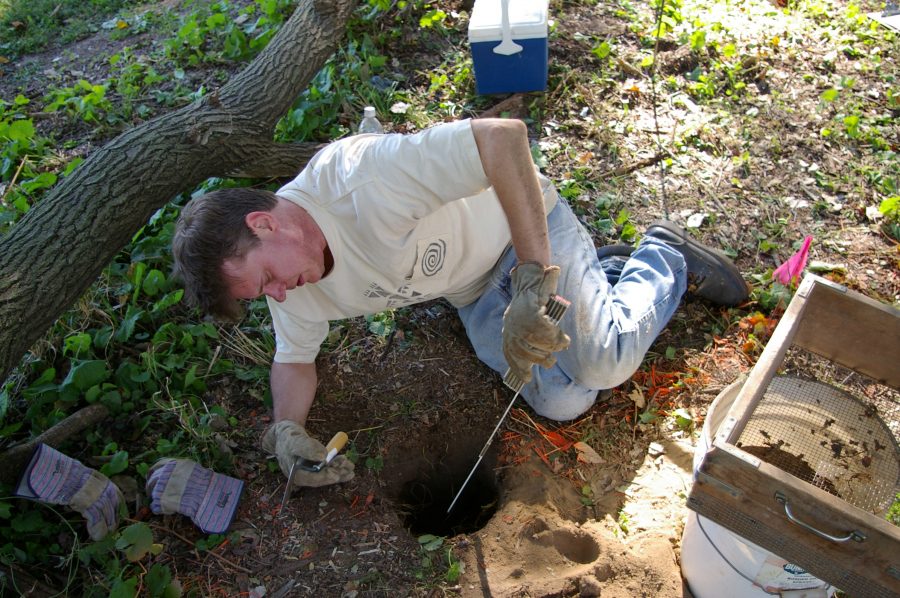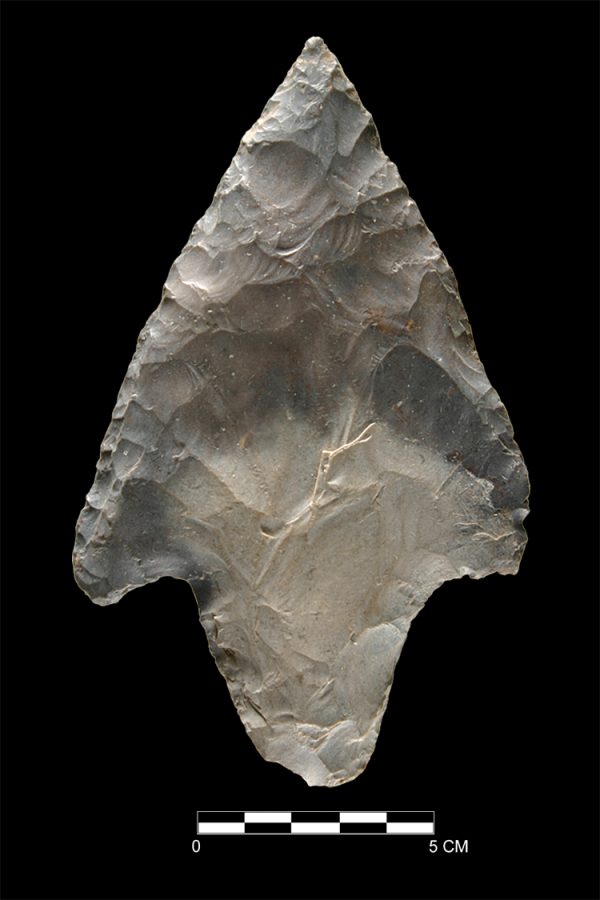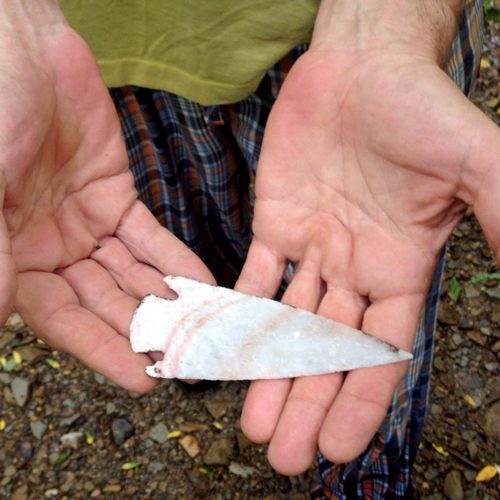Written by Dave Nolan
Photographs courtesy of Illinois State Archeology Survey
01.18.19
Illinois State Archaeological Survey was recently bequeathed the final installment of a multi-year donation of a major, well-documented archaeological collection by Steve Tieken, a long-time collaborator and friend of the program.
The assembled artifacts include hundreds of diagnostic spear, dart, and arrow points, large amounts of prehistoric pottery ranging in age from Early Woodland Marion/Black Sand to Danner ware associated with the historic Illiniwek tribes, and numerous other tool types and objects, such as adzes, celts, axes, pendants, plummets, and scrapers, amassed from nearly 500 western Illinois sites located in Adams, Hancock, Pike, and Schuyler counties.

Importantly, the donation also contains the maps, records, and notes associated with these sites, which range from large villages to a variety of smaller-sized camps and hunting loss locations. The bulk of the collection emanates from the Lima Lake locality of the Mississippi River drainage, which encompasses the eastern side of the valley and adjacent upland area between Quincy, Illinois, and Keokuk, Iowa.
Tieken took a non-traditional route to becoming a practicing Illinois archaeologist, after a successful, decades-long stint as a musician lead him back home to Quincy in 1992. Upon his return, Steve rediscovered a love for native art and culture by walking local fields and streams, doing extensive reading, research, and experimentation, as well as his frequent interaction with tribal groups/individuals and the regional collecting and professional archaeological communities.

He worked at ISAS (Illinois Transportation Archaeological Research Program (ITARP) at that time) as an archaeological survey and field technician from 2000-2001, but soon forged out on his own to pursue non-compliance-related research, founding the North American Archaeological Institute (NAAI) in 2002, a Quincy-based not-for-profit that he ran until 2013. Steve and his organization (along with Joe Bartholomew) were instrumental in the discovery of the archaeological remains of the War of 1812-era site of Fort Johnson and Cantonment Davis, which were donated to ISAS in 2009. In 2013, he gave the extensive Lima Lake Survey collections to the program, which he amassed with Ed Wilcox over a five-year-period (1996-2001).
His most recent gift primarily consists of the Hilgenbrink site (11A80) salvage records, artifacts, and samples, which derive from a notable bluff base Hopewell (and early Late Woodland) habitation. However, the 2018 donation also includes collections relating from numerous spot surveys and studies in other parts of western Illinois, as well as a large diagnostic artifact sample amassed from the Berblinger Farm in central Adams County and the documentation associated with absolute dating the NAAI undertook on an early Holocene-age mastodon tooth from Andrew Farm Gully (11A1578), protohistoric bison teeth discovered eroding from a Lima Lake drainage ditch, and Woodland-age carbon samples derived from pit features salvaged at Hilgenbrink.

Steve is an excellent example of how a single individual can make a significant contribution to our collective understanding of the past. The projects he undertook individually, as well as with the NAAI and others, have been the basis for a number of professional and avocational journal articles and will undoubtedly continue to inspire archaeologists working in the region for the foreseeable future.
One of the primary reasons is that the detailed records, notes, and observations Tieken made about the artifacts and features he amassed and salvaged over a 25-year period will now be available to interested researchers in perpetuity. This collection is an archaeological treasure trove of data.

